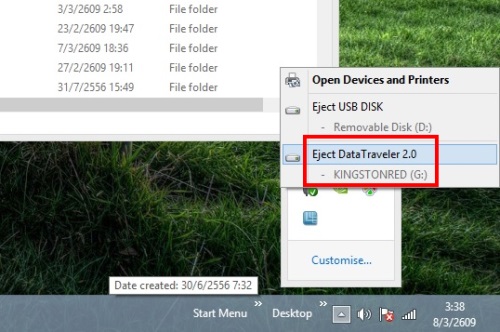

However, Windows automatically disables caching on USB devices, unless you specifically say that you want it enabled.
How to eject a usb Pc#
If you were to yank the USB drive out of your PC before this information is written, or while its being written, you’ll end up with a corrupted file.
How to eject a usb free#
When you plug in a USB drive, you give your PC free rein to write and read data from it some of which is cached.Ĭaching occurs by not writing information immediately to the USB device, and instead keeping it in your PC’s memory (RAM). Yes it can, it’s about what happens if you remove the device when it’s in use (reading or writing): SuperUser contributor Dave Rook explains: How much of a gamble is Simon taking? The Answer Is the of losing such information greatly increased, if the USB media is still flashing at the time of pulling it out of the computer (as opposed to non-flashing) ? What is the rationale behind right clicking on the safely remove icon and can I really lose information on USB media if this is not carried out ?

So far nothing untoward has happened every time I have “been in a rush”. Quite often when I’m in a rush, I automatically pull out a USB pendrive or USB cable from an external hard drive from my desktop PC or laptop, without right-clicking on the safely remove icon in the system tray and unplugging via this route. SuperUser reader Simon is really curious what fate might befall him if he never safely ejects his media:


 0 kommentar(er)
0 kommentar(er)
